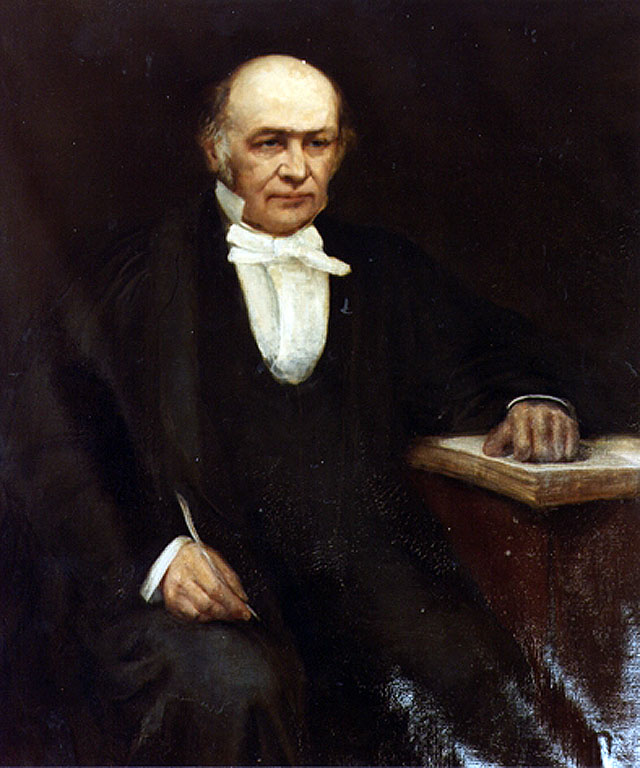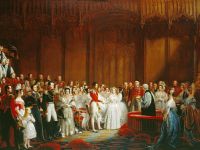
William Rowan Hamilton (1805-1865)
On August 4, 1805, Irish physicist, astronomer, and mathematician William Rowan Hamilton was born. He made important contributions to classical mechanics, optics, and algebra, but is perhaps best known as the inventor of quaternions, a number system that extends the complex numbers.
‘This young man, I do not say will be, but is, the first mathematician of his age.’ (Astronomer Bishop Dr. John Brinkley about 18-year-old Hamilton)
At Age 13 Hamilton spoke 13 Languages
William Hamilton was born as fourth of nine children of Archibald Hamilton, a solicitor originally from Duneboyne, and Sarah Hutton in Dublin. His father did not have time to teach William as he was often away in England pursuing legal business. By the age of five, William Hamilton had already learned Latin, Greek, and Hebrew. He was taught these subjects by his uncle, the Rev James Hamilton, a graduate of Trinity College. At a young age, Hamilton displayed an uncanny ability to acquire languages. At age 13, he had already acquired 13 languages, among them the classical and modern European languages, but also Persian, Arabic, Hindustani, Sanskrit, and even Marathi and Malay.
“Analysis and synthesis, though commonly treated as two different methods, are, if properly understood, only the two necessary parts of the same method. Each is the relative and correlative of the other.” (William Rowan Hamilton)
Hamilton’s Principal Function
William Hamilton’s introduction to mathematics came at the age of 13 with algebra. Already two years later, he was studying the works of Newton and Laplace.[5] In 1822 Hamilton found an error in Laplace’s ‘Mécanique célest‘, which brought him to the attention of the scientists of his time. Hamilton was part of a small but well-regarded school of mathematicians associated with Trinity College, Dublin, which he entered at age 18. He studied both classics and mathematics, and was appointed Professor of Astronomy in 1827, prior to his graduation taking up residence at Dunsink Observatory where he spent the rest of his life. In 1827, Hamilton presented a theory of a single function, now known as Hamilton’s principal function. The theory brought together mechanics, optics and mathematics, thus helping establish the wave theory of light. The Royal Irish Academy paper was entitled Theory of Systems of Rays, with the first part being printed in 1828 in the Transactions of the Royal Irish Academy. According to this theory, a single ray of light entering a biaxial crystal at a certain angle emerged as a hollow cone of rays. This breakthrough is still known by its original name, “conical refraction” [1].
“Time is said to have only one dimension, and space to have three dimensions. […] The mathematical quaternion partakes of both these elements; in technical language it may be said to be ‘time plus space’, or ‘space plus time’: and in this sense it has, or at least involves a reference to, four dimensions.” (William Rowan Hamilton)
Motion in Discrete Systems
Hamilton had a deep interest in the fundamental principles of algebra. One thing common in all Hamilton’s research was that they were based on the principle of “Varying Action”. While the principle is based on the calculus of variation, it, however, revealed a detailed mathematical structure than that had been previously understood. Though Hamilton’s take on classical mechanics is based on the same physical principles of Newton and Lagrange, it provides a powerful new technique for working with the equations of motion.[6] Both Lagrangian and Hamiltonian approaches were initially developed to describe the motion of discrete systems and have proven to be critical in the study of continuous classical systems in physics, and even quantum mechanical systems. As such, the techniques are still in use in electromagnetism, quantum mechanics, quantum relativity theory, and quantum field theory [2].
Quaternions
In 1835 William Hamilton was knighted and from 1837 to 1846 he served as president of the Royal Irish Academy. The great contribution Hamilton made to mathematical science was his discovery of quaternions in 1843. Originally, Hamilton was looking for ways of extending complex numbers (which can be considered as points on a 2-dimensional plane, where the x-axis are real numbers and the y-axis the imaginary numbers) to higher spatial dimensions. He failed to find a useful 3-dimensional system, but in working with four dimensions he created quaternions. According to Hamilton, he was out walking along the Royal Canal in Dublin with his wife when the solution in the form of the equation i2 = j2 = k2 = i j k = -1. suddenly occurred to him.
“Identity is a relation between our cognitions of a thing, not between things themselves.” (William Rowan Hamilton)
Abandoning the Law of Commutativity
Hamilton then promptly carved this equation using his penknife into the side of the nearby Broome Bridge. Today, a plaque under the bridge, unveiled in 1958, marks the discovery of the quaternions. The quaternion involved abandoning the law of commutativity, a radical step for the time. Not only this, but Hamilton had in a sense invented the cross and dot products of vector algebra. Hamilton also described a quaternion as an ordered four-element multiple of real numbers, and described the first element as the ‘scalar’ part, and the remaining three as the ‘vector’ part. Hamilton devoted the last 22 years of his life to the development of the theory of quaternions and related systems. For him, quaternions were a natural tool for the investigation of problems in three-dimensional geometry. Many basic concepts and results in vector analysis have their origin in Hamilton’s papers on quaternions. William Hamilton passed away on September 2, 1865 after a severe attack of gout.
One of Ireland’s Leading Scientists
Today, William Hamilton is recognized as one of Ireland’s leading scientists. The year 2005 was the 200th anniversary of Hamilton’s birth and the Irish government designated that the Hamilton Year, celebrating Irish science. Numerous concepts and objects in mathematics and mechanics are named after Hamilton, such as Hamilton’s equations, Hamilton’s principle, Hamilton’s principal function, and the Hamilton–Jacobi equation. The algebra of quaternions is usually denoted by a blackboard bold H in honor of Hamilton. Hamilton saw in the quaternions a revolution in theoretical physics and mathematics and tried for the rest of his life to propagate their use, being supported in the second half of the 19th century by other British mathematicians such as Peter Guthrie Tait. After his death he left behind an unfinished two-volume work on quaternions written with Euclid’s elements in mind. Finally, however, vector calculus and vector analysis became the language of description, represented by Hermann Graßmann, Josiah Willard Gibbs and Oliver Heaviside. Lord Kelvin wrote about it: “Quaternions was invented by Hamilton after his truly important work had been completed. Although beautiful and of ingenious origin, they have been a curse on anyone who has come into contact with them in any way.” In his own books Kelvin avoided both quaternions and vectors. Later it turned out that Olinde Rodrigues found the quaternions as early as 1840.
Quaternions, [10]
References and Further Reading Related:
- [1] O’Connor, John J.; Robertson, Edmund F., “Sir William Rowan Hamilton”, MacTutor History of Mathematics archive, University of St Andrews.
- [2] Sir William Rowan Hamilton. 2013. The Famous People website.
- [3] William Rowan Hamilton in Britannica Online
- [4] The Hamilton year 2005 web site
- [5] Pierre Simon de Laplace and his true love for Astronomy and Mathematics, SciHi Blog
- [6] Joseph-Louis Lagrange and the Celestial Mechanics, SciHi Blog
- [7] William Rowan Hamilton at Wikidata
- [8] Willian Rowan Hamilton at zbMATH
- [9] William Rowan Hamilton at Mathematics Genealogy Project
- [10] Quaternions, UC Davis Academics @ youtube
- [11] Brown, Daniel (2012). “William Rowan Hamilton and William Wordsworth: the Poetry of Science”. Studies in Romanticism. 51 (4): 490.
- [12] Memorial Address: Sir William Rowan Hamilton”. Trinity College Dublin.
- [13] Timeline for William Rowan Hamilton, via Wikidata






Pingback: Whewell’s Gazette: Year 03, Vol. #51 | Whewell's Ghost